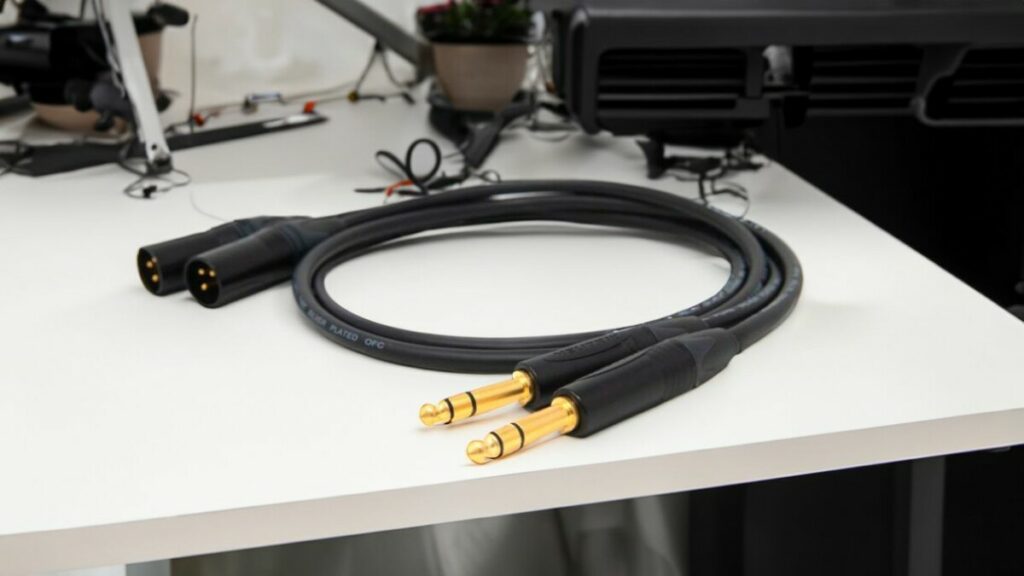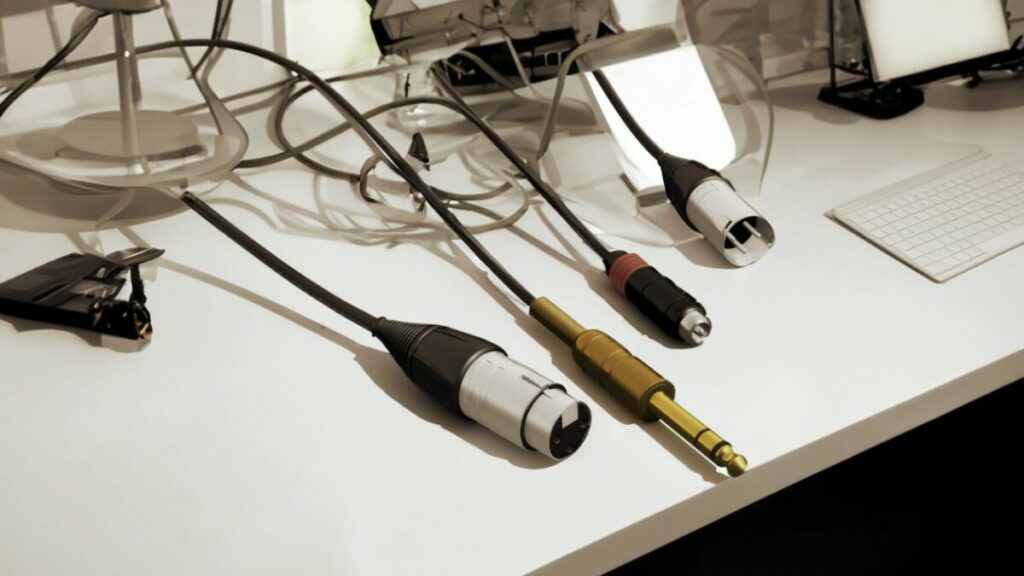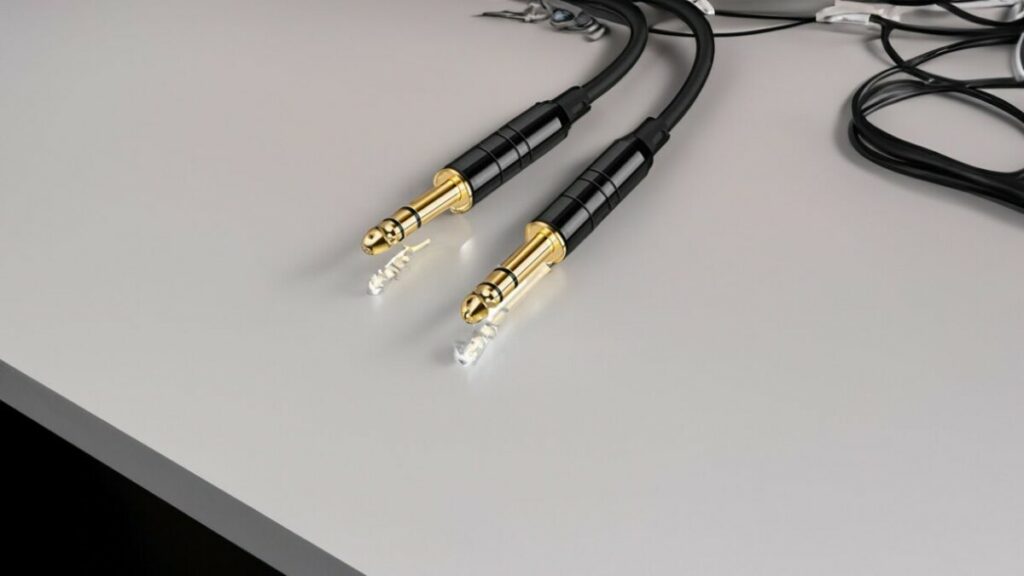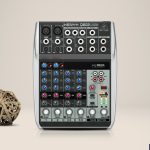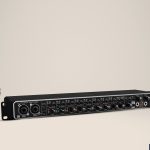Just like the unsung hero of a rock band, your studio monitor cables are the behind-the-scenes maestros of your audio setup. You might not see ’em, but trust me, they’re working overtime to shape that epic sound you’re churning out.
So, to answer that burning question: do they really matter? Heck yeah, they do! In this piece, we’re gonna break down their role, walk you through the different breeds, and help you pick the perfect one for your creative cave.
So buckle up, let’s get into it and amp up your audio game.
Are Studio Monitor Cables Important?
Totally, studio monitor cables do make a difference. You see, the stuff your cable’s made of and its build quality can really mess with the purity of the audio signal – we’re talking annoying noise, interference, or even signal degradation.
Think about it this way: top-tier cables ensure that the sound from your audio source to your monitors is clean and clear. That’s because these cables are focused on construction quality, the type of materials used, how well shielded they are (to keep interference at bay), and the kind of connectors used.
Picking the right cable means your audio signal gets transmitted with zero loss or coloration. But here’s the kicker – there’s a point where you just don’t see any more improvements even if you keep hiking up the cable quality. It’s what we call the ‘diminishing returns’ effect.
My suggestion? Make sure to get your hands on a reliable decent-quality cable that fits well with your setup. And unless you’re working in a hardcore professional environment, you probably don’t need to empty your wallet on those super swanky cables. A good-quality cable will do the trick and keep your sound on point!
The Role of Studio Monitor Cables
So, we’re about to dig deep into the nitty-gritty of studio monitor cables and how they can make or break your audio production game.
The sturdiness of your cables is a biggie. Think about it, these cables are the heartbeat of your studio setup, they face the brunt of being bent, twisted, and plugged in and out on the regular. A robust cable can take all this manhandling in stride and still do its job, giving you that reliable and steady audio output you need.
Now, let’s not forget about connectivity. If you’re skimping on quality cables, you’re asking for trouble – unstable connections can introduce unwanted noise or breaks in your audio, which is a total nightmare for your production. So, make sure you’re using cables that offer rock-solid, secure connections to save yourself from such headaches.
Always remember, in audio production, it’s often the smallest things that end up making the biggest difference. So, don’t overlook these seemingly minor details, they could be game-changers.
Different Types of Studio Monitor Cables
As you’re on the hunt for that pristine, crystal-clear sound, you’ll stumble upon a plethora of cable types, each flaunting its own unique set of perks. You gotta take into account not just the sound quality, but also how tough these bad boys are and how snazzy they look.
- Balanced XLR Cables: These babies are built to last. They’re damn robust, so they can take a beating and still keep ticking. Plus, they’re pretty good at fighting off any pesky interference.
- Unbalanced RCA Cables: Sure, they mightn’t be as hardy as the XLRs, but these cables have their own charm. They add a touch of class to your setup, making your studio look sleek and stylish.
- TRS Cables: These guys sit comfortably in the middle. They’re not just tough, but they also score some serious style points. No wonder they’re a crowd favorite.
Factors Influencing the Performance of Monitor Cables
When you’re trying to get the best out of your monitor cables, there are a few things you need to keep an eye on.
First off, the length of your cables does make a difference. The longer the cable, the weaker the signal gets. Pretty simple, right?
Then there’s the gauge of the cable. You’d think that a thicker cable would give you a better signal, but actually, it’s the opposite. The thicker the gauge, the less signal loss you have. Who would’ve thought?
But it doesn’t stop there. The quality of the connectors on your cables is also super important. If you’ve got top-notch connectors, you’re gonna get the best signal transmission possible. It’s all about that optimum performance.
And let’s not forget about durability. A cable that can take a beating and still do its job is golden. It’s less likely to have signal interference, which can mess with the audio quality of your studio monitor cables. So, investing in a cable made from tough stuff is a no-brainer.
Getting all this stuff down can really help you make smart choices when you’re buying and taking care of your studio monitor cables. Remember, it’s all about the length, gauge, connector quality, and durability. Keep all this in mind and you’ll keep that annoying signal interference to a minimum.
Choosing the Right Cable for Your Studio Monitor
Figuring out the right cable for your studio monitor is a little more complicated than just grabbing the first one you see on the shelf. There’s a lot to think about – from cable length and thickness to the quality of the connectors and how tough the cable is. Let’s dive into it.
- Cable Durability: You’re gonna be plugging and unplugging this bad boy a lot, so make sure it can handle the heat. The last thing you want is a cable that gives up at the first sign of strain and messes with your sound quality.
- Connection Compatibility: It’s a no brainer, really. The connectors on the cable need to fit the inputs and outputs on your gear. It’s like trying to fit a square peg in a round hole – ain’t gonna happen.
- Quality: Don’t skimp on this. A cheap, poorly made cable is more hassle than it’s worth. It can mess with your sound and throw your work off balance.
Does the size of studio monitors affect their overall performance and sound quality?
Size matters, folks, especially with studio monitors. Their overall performance and the quality of sound they blast out can seriously be impacted by their size. On a similar note, did you ever wonder whether studio monitors need to be broken in? It’s a debate that’s been going on for years.
So here’s the deal: bigger studio monitors usually crank out deeper and more precise bass tones. But if you’re working in a smaller space or all about that near-field listening, smaller monitors could be your best bet.
So, when you’re decked out in your DJ digs in a pro audio environment, keep in mind that the studio monitor size is important if you’re aiming for the perfect sound reproduction. It’s one of those details that makes all the difference.
The Impact of Monitor Cables on Sound Quality
You mightn’t have given it much thought, but believe it or not, the type of cable you’re using can totally mess with your sound quality. It’s not something you’d instantly think of, but the length of the cable can actually make a huge difference.
But when it comes to brands, have you ever thought about popular names in the audio industry? For instance, you might wonder, does Bose make studio monitors? Brands like Bose have their distinct characteristics that can also influence sound quality.
You know how when you’re on a long road trip, your car starts to act up? Well, it’s the same with cables. A super long cable can degrade the signal, which messes up your sound quality. Furthermore, it’s not just cables that play a role in audio quality. Did you know that some studio monitors can use a significant amount of electricity? It’s worth considering if you’re aiming for a power-efficient setup.
But it’s not all about length though, short cables have their own benefits. They provide a more direct route for the signal and face less resistance, kinda like taking a shortcut home from work.
And let’s not forget about the connectors. You can’t just go for any old connector, the quality is super important. Bad quality connectors are like that annoying static noise on the radio, they can add noise and distortion to your audio. So, it’s definitely worth investing in connectors with solid shielding to keep the interference at bay and keep your sound tight.
In a nutshell, both the cable length and the connector quality can make or break your sound quality. So, don’t just go for the first cable you see, be on point with your selection. Trust me, your ears will thank you for it.
Mix & Mastering
I love to get my hands on all sorts of audio equipment, from headphones and speakers to audio interfaces. I love putting these products through their paces and seeing what they can do.


